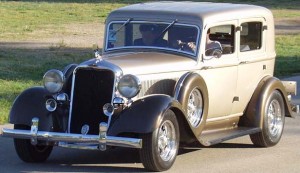 I saw an antique car in a parking lot today. Just quickly browsing on the internet, it looked like an American model from the early 1930’s (like this 1933 Dodge photo I found on carnut.com).
I saw an antique car in a parking lot today. Just quickly browsing on the internet, it looked like an American model from the early 1930’s (like this 1933 Dodge photo I found on carnut.com).
I started to wonder what it would take to make a car like that road-ready based on today’s standards. How much of the car was original, and how much was reconstructed using today’s technology and materials? Had there been any upgrades to the engine or exhaust, and did it have any hidden but modern features such as air conditioning or a CD player? Did it even have seat belts or any other more modern safety features?
When building an existing organization for the future, we can ask ourselves similar questions.
- What features of the improved organization should be recognizable as the same organization?
- Which aspects do we need to retain to stay true to our purpose and values?
- What parts can we rebuild with new technology and new ideas?
- How do we remain flexible with an eye toward the future?
- What should be overhauled, replaced or augmented based on what we now know works?
- What is required based on new or foreseen standards?
- Do you need to do maintenance, or restoration?
The 76-year-old car I saw was well-kept and shiny. When the owner arrived, it started right up and he drove away.
How might you make your organization road-ready for the future?
Here’s another exercise, because metaphors are incredibly useful for thinking about your organization (or anything else) in new ways, and discovering ideas and insights that might otherwise be left undiscovered.
Take a look at the picture of the antique car and ascribe parts of the car to features of your organization, department, process, etc. Then use that association to consider the questions above. Take the headlamps as an example:
What do the headlamps represent? Our strategic planning process.
What is required based on new or foreseen standards? The lights need to be brighter than before. So we can see the road clearly, plus what is not on the road but headed straight for us.
What parts can we rebuild with new technology and new ideas? The amount of information available to us is increasing. We need a better way to process it all and make sense of it.
You get the idea.
